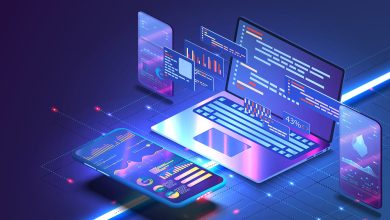
A Comprehensive Guide to Hyperautomation Services for Digital Transformation
The quest for efficiency has long driven businesses to automate, with McKinsey reporting that 31% of businesses have fully automated at least one function, but the digital age demands a bolder approach.
Enter hyperautomation: a revolutionary strategy that’s not just about eliminating repetitive tasks but about fundamentally reimagining how work gets done.
Think of it this way: if traditional automation was about individual tools like robotic process automation (RPA) tackling single, rule-based tasks, hyperautomation is the symphony where those tools, along with artificial intelligence (AI), machine learning (ML), and other cutting-edge technologies, come together to orchestrate an entire business transformation.
It’s the difference between a solo instrument and a full orchestra – more powerful, more nuanced, and capable of creating truly transformative outcomes.
Hyperautomation isn’t just another buzzword; it’s the roadmap to survival and thriving in a world where business models are constantly disrupted.
In fact, 88% of small business owners say automation allows their company to compete with larger companies, according to Zapier.
Companies that embrace this holistic approach are poised to unlock new levels of efficiency, adaptability, and customer satisfaction, leaving their less agile competitors in the dust.
The Business Case for Hyperautomation: Top 10 Benefits
According to Formstack, 76% of businesses use automation for standardising or automating daily workflows; 58% use automation for data/reporting for planning, and 36% use it for regulation or compliance.
Why should hyperautomation be on your radar? The hyperautomation benefits are undeniable:
- Unleashing Efficiency
Hyperautomation tackles inefficiencies at their root, streamlining workflows, reducing manual effort, and eliminating errors.
Imagine an entire invoice processing workflow – from data extraction and validation to approval and payment – completed in minutes with minimal human intervention.
- Unlocking Productivity
Employees freed from repetitive tasks can focus on strategic, creative, and high-value activities, driving innovation and business growth. Consider a team of analysts no longer bogged down by data entry.
Now, they have the bandwidth to analyze market trends, identify opportunities, and develop new business strategies.
- Adaptability at Speed
Hyperautomation empowers businesses to respond rapidly to change. A new regulation comes into effect? An agile hyperautomation system can be quickly adapted to ensure compliance.
A competitor launches a disruptive product? Hyperautomation can help you rapidly adjust your processes to stay ahead.
- Data-Driven Decisions
Hyperautomation solutions often incorporate analytics and process mining tools. This allows you to extract valuable insights from your processes, identifying bottlenecks, uncovering optimization opportunities, and driving continuous improvement.
Imagine identifying a previously unseen pattern in customer behavior that could lead to a significant new revenue stream.
- Cost Savings
While the upfront investment in hyperautomation might seem significant, the long-term savings are undeniable. Reduced labor costs, minimized errors, increased throughput, and improved decision-making all contribute to a healthy bottom line.
- Enhanced Customer Experience
Hyperautomation can significantly improve customer interactions. By automating repetitive tasks and integrating disparate systems, businesses can deliver faster, more accurate, and personalized customer service.
Imagine a customer service chatbot that can quickly access relevant information from multiple systems to resolve a customer’s issue in a single interaction, rather than transferring them from department to department.
- Improved Employee Morale and Retention
By eliminating tedious tasks and empowering employees to focus on more meaningful work, hyperautomation can boost morale and job satisfaction.
This leads to higher engagement and productivity, and can even reduce employee turnover, saving the company on recruitment and training costs.
- Enhanced Regulatory Compliance
Hyperautomation helps ensure adherence to complex and evolving regulations. Bots can be programmed to follow strict rules and protocols, reducing the risk of human errors that could lead to compliance violations.
For example, in the financial industry, hyperautomation can be used to automate KYC (Know Your Customer) processes, ensuring that customer data is collected and verified accurately and consistently.
- Scalability and Growth
As your business expands, your processes need to keep up. Hyperautomation solutions are highly scalable, allowing you to add new capabilities and accommodate increased workload without significant disruption. This means you can grow your business without sacrificing efficiency or quality.
- Future-Proofing Your Operations
Hyperautomation isn’t just about solving today’s problems; it’s about preparing for the future.
By embracing hyperautomation, you’re investing in a technology that can adapt to new challenges, emerging technologies, and changing business models. This ensures that your organization remains agile and competitive in the years to come.
The Hyperautomation Landscape: A Multitude of Solutions
Robotic Process Automation (RPA): Your Digital Workforce
Think of RPA as your army of tireless digital workers. They excel at handling high-volume, repetitive tasks that follow predictable rules.
For instance, imagine a finance department inundated with invoices. An RPA bot can be trained to extract key data points (vendor name, amount, invoice date), validate them against purchase orders, and even initiate payments – all without human intervention.
This frees up your accounting team to focus on more strategic work, like financial analysis or vendor relationship management.
Intelligent Automation (IA): When Bots Get Smarter
RPA is great for simple tasks, but what about processes that require decision-making? That’s where intelligent automation (IA) comes in.
IA combines the power of RPA with artificial intelligence (AI) technologies like machine learning and natural language processing.
Imagine a customer service chatbot that doesn’t just answer pre-programmed FAQs but can actually understand customer queries, access their account history, and offer personalized solutions.
That’s IA in action, handling more complex interactions and freeing up human agents for escalated cases.
Machine Learning (ML): The Self-Improving Bot
Machine learning (ML) takes automation to the next level by enabling systems to learn and improve over time.
An ML-powered RPA bot processing loan applications can analyze historical data to identify patterns that predict loan defaults.
It then uses this knowledge to refine its risk assessment process, becoming more accurate and efficient over time.
This self-learning capability allows hyperautomation to tackle tasks that were once considered too complex for automation.
Natural Language Processing (NLP): Making Sense of Unstructured Data
Unstructured data like emails, contracts, and customer feedback often holds valuable insights, but it can be challenging to extract and analyze.
Natural language processing (NLP) allows hyperautomation solutions to understand and process human language.
Consider a customer service team inundated with emails. An NLP-powered bot can analyze these emails, categorize them by topic, extract key information, and even suggest responses to the customer.
This drastically speeds up response times and allows agents to focus on complex issues that require human empathy and understanding.
Business Process Management (BPM): The Orchestrator
BPM is the backbone of hyperautomation, providing the framework for designing, modeling, executing, and optimizing end-to-end processes.
It’s like the conductor of an orchestra, ensuring all the different automation components work in harmony.
Let’s say a company wants to automate its entire order fulfillment process, from order placement to delivery.
BPM orchestrates the various tasks, ensuring that data flows smoothly between systems, exceptions are handled appropriately, and the overall process runs seamlessly.
Low-code/No-code Platforms: Democratizing Automation
Not everyone is a coder, but everyone can benefit from automation. Low-code/no-code platforms empower business users to build simple automation workflows without the need for technical expertise.
For instance, a marketing manager could create a bot to automate lead generation from social media platforms or an HR professional could design a workflow to streamline onboarding tasks. These platforms democratize automation, allowing individuals across the organization to participate in the digital transformation journey.
WNS-Vuram: Your Hyperautomation Partner
WNS-Vuram is a leader in providing comprehensive hyperautomation services and solutions. Our expertise spans process discovery, solution design, implementation, and ongoing support.
We help businesses identify the right automation technologies and strategies to achieve their specific goals.
In the digital age, hyperautomation is a necessity, not a luxury. If you’re ready to embrace the future of work and elevate your business, contact WNS-Vuram today to discover how our hyperautomation services can transform your operations and unlock new levels of efficiency, productivity, and innovation.





